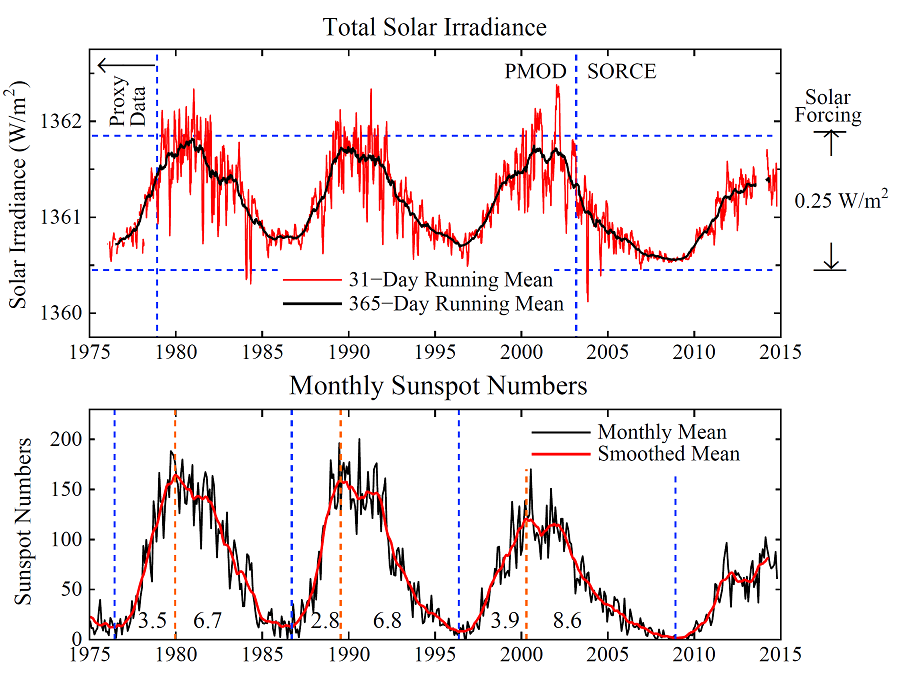2. Thermal Radiation
Solar Radiation (4/4)
How constant is the solar constant?
The photosphere of the sun contains complicated layers and a lot of turbulence, which result in a radiation emission that varies at different locations and different times. There are a group of dark sunspots, appearing in an 11-year cycle, that are particularly interesting - the Schwabe cycle. They are accompanied by bright emissions on the solar surface, which results in a slightly increased brightness of the sun. Satellites in space have been measuring these changes precisely since 1978.

Above: Monthly and yearly averaged timelapses of the solar irradiance from 1976 to 2015. About the data sources: SORCE is NASA's Solar Radiation and Climate Experiment; PMOD is the Physical Meteorological Observatory in Davos in Switzerland; The proxy data are not measured directly, but are derived from the environmental conditions at the time. Bottom: Frequency of the observed sunspots averages across a month and as a moving average over a longer period of time.
Source: James Hansen et al., PLOS ONE, 2013, modified.
The 'solar forcing' 0.25 W/m² given on the right-hand side of the graph indicates the influence of the sun brightness on climate changes. With a relative value of 2·10-4, it is considered quite low. We will see in the section on the greenhouse effect that a net 0.6 W/m² of solar radiation remains on earth due to the increasing greenhouse gases; this continuous forcing explains the current climate change. However, the solar forcing is periodic and therefore does not lead to long-term changes in the climate.
We can now answer the question asked at the beginning of this chapter: Is the sun a black body?
That's not the case, because
- the spectrally broad thermal emission of the photosphere cannot be defined by an exact temperature, due to the variable temperatures of the layers of the sun, and
- the many spectrally narrow Fraunhofer lines are superimposed on the thermally generated emission spectrum.
Despite these restrictions, solar radiation, if measured in space unaffected by scattering and absorption in the earth's atmosphere, can be defined quite well by the laws of black body radiation, provided that high accuracy of some details is not essential:
- the color temperature is about 5900 K; at this temperature, according to the results of the previous section, the shape of the spectrum (but not its brightness!) can be approximated well by Planck's law of radiation;
- the black body temperature or radiation temperature Trad, that describes a black body with the same brightness is 5772 K. It is slightly colder than the color temperature and results from the slightly lower brightness of the spectrum of the extraterrestrial solar radiation.

The sun is therefore a grey emitter.
... even if we really appreciate its colours.
